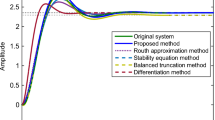Abstract
The aim of this paper was to compare the sustainable control capabilities of a nonlinear pseudo-derivative feedback (NPDF) controller with its conventional equivalent, as well as with a sliding mode control (SMC) system and two proportional–integral–derivative (PID) controller variants. The NPDF controller obtained the best performance, achieving control with recorded annual savings of at least 6730 kWh over the PID and SMC systems; as well as proving to be more energy efficient than its traditional variant. Additionally, the control architecture exhibited superior robustness to the SMC system, successfully maintaining control of every cabin mass, travel distance and travel direction considered. The results were particularly significant due to the similarity of the control scheme with PID control, the most common industrial control system. This would allow for NPDF control to be implemented in existing PID-controlled systems with relative ease.















































Similar content being viewed by others
Availability of data and materials
The datasets generated and/or analysed during the current study are available from the corresponding author on reasonable request.
References
Desha CJ, Hargroves KC, Smith MH, Stasinopoulos P (2007) The importance of sustainability in engineering education: a toolkit of information and teaching material. In: Engineering training and learning conference, Brisbane, pp 1–14
Mangera M, Parshotam DS, Hill I-LR, Panday A, Pedro JO (2017) Velocity tracking of a high-rise building elevator using PDF control. In: 11th Asian control conference, Gold Coast. IEEE, pp 2310–2315
Otis Elevator Company, Otis4000, Otis Elevator Company (2014). http://www.otisworldwide.com/site/hk-chi/OT_DL_Documents/OT_DL_DownloadCenter/OTIS%204000/OTIS%204000.PDF. Accessed 27 Apr 2018
Prakash R, Singh RK, Kumar RR (2015) Variable voltage variable frequency speed control of induction motor using FPGA-Xilinx. Int Res J Eng Technol 2(3):1268–1273
Park JS, Hyon BJ, Kim JH, Choi JH (2016) Implementation of VVVF drive for a three phase induction machine. In: International symposium on power electronics, electrical drives, automation and motion, Anacapri. IEEE, pp 535–540
Hill I-LR, Mangera M, Parshotam DS, Panday A, Pedro JO (2018) Genetic algorithm based design of PID and PDF controllers for velocity tracking of a high-rise building elevator. In: SICE international symposium on control systems, Tokyo. IEEE, pp 136–143
Krishna DGA, Anbalagan K, Prabhakaran KK, Kumar S (2020) An efficient pseudo-derivative-feedback-based voltage controller for DVR under distorted grid conditions. IEEE J Emerg Sel Top Ind Electron 2(1):71–81
Karthikeyan A, Nagamani C (2019) FPGA based direct torque control with speed loop Pseudo derivative controller for PMSM drive. Clust Comput 22(6):13511–13519
Mangera M, Panday and A, Pedro JO (2019) GA-based nonlinear pseudo-derivative feedback control of a high-speed, supertall building elevator. In: Conference on control technology and applications, Hong Kong. IEEE, pp 982–987
Mangera M, Pedro JO, Panday A. Direct adaptive neural network-based sliding mode control of a high-speed, ultratall building elevator using genetic algorithm. SN Appl Sci. https://doi.org/10.1007/s42452-022-04949-6
Lakhekar GV, Waghmare LM (2018) Adaptive fuzzy exponential terminal sliding mode controller design for nonlinear trajectory tracking control of autonomous underwater vehicle. Int J Dyn Control 6(4):1690–1705
Lochan K, Roy BK (2018) Second-order SMC for tip trajectory tracking and tip deflection suppression of an AMM modelled nonlinear TLFM. Int J Dyn Control 6(3):1310–1318
Tingting Y, Xiaohui D, Feng H (2017) Study on optimization control method of bed temperature for circulating fluidized bed. In: 36th Chinese control conference, Dalian. IEEE, pp 4339–4344
Singh M, Patel RN, Jhapte R (2016) Performance comparison of optimized controller tuning techniques for voltage stability. In: First international conference on control, measurement and instrumentation, Kolkata. IEEE, pp 11–15
Mitrica R-I, Culita J, Stefanoiu D (2021) Identification and PID control of ASTANK2 plant using genetic and firefly algorithms. In: 25th international conference on system theory, control and computing, Iaşi. IEEE, pp 570–575
Ryu H-M, Kim S-J, Sui S-K, Kwon T-S, Kim K-S, Shim Y-S, Seouk K-R (2002) Dynamic load simulator for high-speed elevator system. In: Power conversion conference, Osaka. IEEE, pp 885–889
Ben BS, Ben BA, Adarsh K, Vikram KA, Ratnam C (2013) Damping measurement in composite materials using combined finite element and frequency response method. Int J Eng Sci Invent, pp 89–97
Oriental Motor, Technical Reference, Oriental Motor (2013)
Garces FR, Becerra VM, Kambhampati C, Warwick K (2012) Strategies for feedback linearisation: a dynamic neural network approach. Springer, London
Liu J (2017) Sliding mode control using MATLAB. Academic Press, Beijing
Shaban EM, Sayed H, Abdelhamid A (2019) A novel discrete PID+ controller applied to higher order/time delayed nonlinear systems with practical implementation. Int J Dyn Control 7(3):888–900
Fiuzy M, Shamaghdari S (2021) Stability analysis of fractional-order linear system with PID controller in the output feedback structure subject to input saturation. Int J Dyn Control 1–14
ODYSEE-MURE, SECTORAL PROFILE – HOUSEHOLDS, Enerdata. https://www.odyssee-mure.eu/publications/efficiency-by-sector/households/electricity-consumption-dwelling.html. Accessed 10 Feb 2021
KONE Corporation, KONE regenerative solutions, KONE Corporation (2009). http://rbplifts.com/wp-content/uploads/2017/11/1797_Regenerative_solutions_MidRange_fact_sheet.pdf. Accessed 12 Feb 2021
Funding
No funds, grants, or other support was received.
Author information
Authors and Affiliations
Contributions
1. Conceptualisation: Mangera, Pedro 2. Data Curation: Mangera 3. Formal Analysis: Mangera, Pedro 4. Funding Acquisition: N/A 5. Investigation: Mangera, Pedro 6. Methodology: Mangera 7. Project Administration: Pedro, Mangera 8. Resources: Pedro, Panday 9. Software: Mangera 10. Supervision: Pedro, Panday 11. Validation: Pedro, Panday 12. Visualisation: Mangera, Pedro 13. Writing - original draft: Mangera 14. Writing - review & editing: Pedro, Panday
Ethics declarations
Conflict of interest
The authors have no conflicts of interest to declare.
Code availability
The codes used during the current study are available from the corresponding author on reasonable request.
Consent for publication
The authors give consent for publication.
Rights and permissions
About this article
Cite this article
Mangera, M., Pedro, J.O. & Panday, A. GA-optimised nonlinear pseudo-derivative feedback control of a sustainable, high-speed, ultratall building elevator. Int. J. Dynam. Control 10, 1903–1921 (2022). https://doi.org/10.1007/s40435-022-00929-1
Received:
Revised:
Accepted:
Published:
Issue Date:
DOI: https://doi.org/10.1007/s40435-022-00929-1




